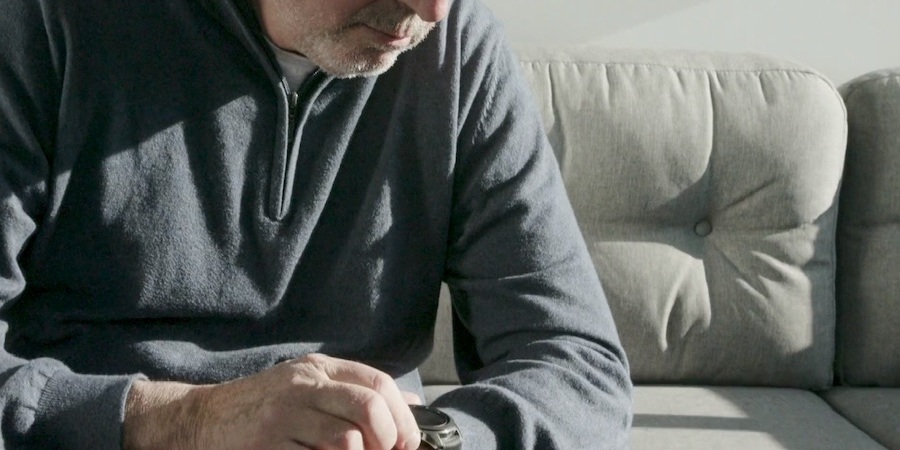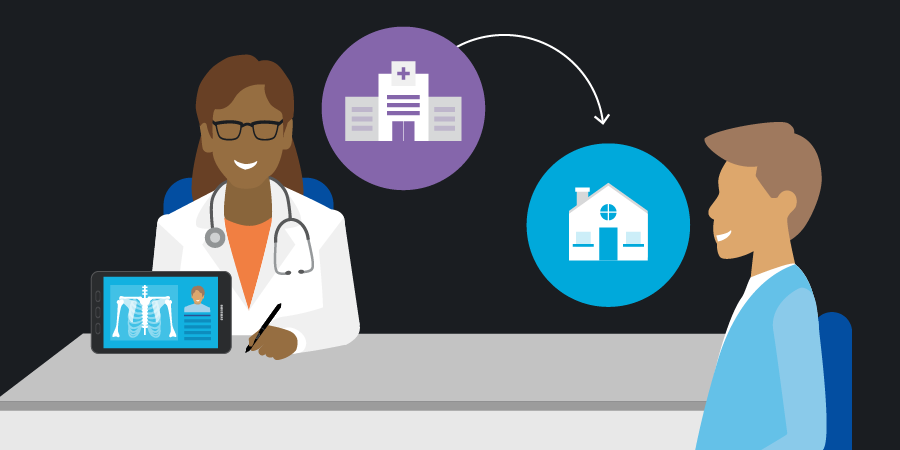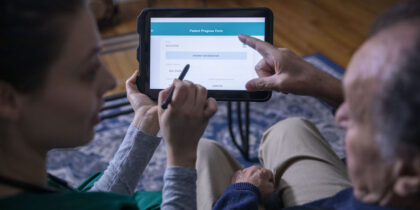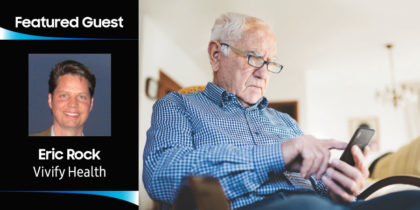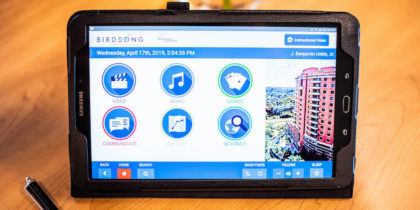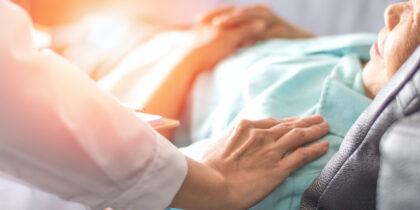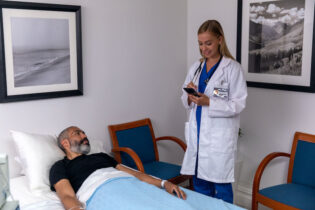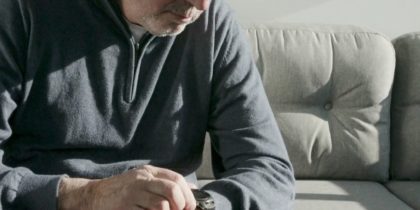Home is where the heart is, and where most seniors want to be. Of the 52 million seniors in the U.S., 76 percent want to live at home for as long as possible, according to AARP. To help make this dream a safe reality, mobile tech companies are rolling out innovative solutions for medication management, remote patient monitoring and personal emergency response systems (PERS). WellCare Today has built all three into one customized Samsung smartwatch.
That’s not just good news for seniors. Their ability to stay out of the hospital and out of nursing homes saves insurers money too. It also eases the burden on the already overwhelmed U.S. healthcare system. But seniors’ living alone does present some safety concerns.
Older people are more likely to have complex health conditions, which often require equally complex medication regimens. Missing a dose or taking the wrong dose can lead to a serious health crisis. WellCare Today reports that inconsistent dosage leads to 25 percent of hospitalizations among people 65 and over. Other age-related challenges, such as memory or balance issues, may also make family caregivers worry whether Mom and Dad are safe at home.
WellCare Today wants to alleviate caregivers’ worries. If a senior is wearing a HealthAssist Watch, their loved ones can see their location and the physician can also monitor them remotely (and get reimbursed by the Centers for Medicare and Medicaid Services).
So how does the HealthAssist Watch work, and how does it benefit all the different stakeholders in senior care?
High tech for high-risk seniors
WellCare Today began with a population health management program that helped Medicare Advantage patients remember to refill their prescriptions and get preventative exams. The program helped five major insurers significantly improve health outcomes for Medicare Advantage patients, primarily by improving medication adherence.
The program was very successful, and also a learning experience.
CEO Daniel Ferrara explains, “We learned from the health insurance companies that, among the older portion of Medicare Advantage members, the members who don’t use digital technology are the most costly and the highest-risk members, and insurers couldn’t get them engaged in a program. That’s why we developed the HealthAssist Watch. All people have to do is wear the watch and we can interact with them.”
How Mobile Solutions Improve Patient Experience
Get your free guide to enhancing the patient experience with mobile technology. Download Now
When users need a refill on their prescription, they push one button on their watch to trigger a pharmacy request. If they fall behind on their refills, their caregiver is alerted via the HealthAssist Web Companion. Caregivers can also use the web portal to schedule reminders about upcoming doctor’s appointments or even family birthdays.
Ferrara adds, “The family caregiver is probably the one person who has the greatest influence in changing the senior’s behavior and making sure they take their medications and improve their health.”
From medication adherence to remote monitoring
The solution does more than send alerts. Because it’s built around a smartwatch with advanced sensors, it also collects data.
“The Samsung device lets us increase our feature set 10 times,” says Ferrara. “We’re able to continue to use our health management ecosystem because the watch, in essence, plugs into it, but we also added data from the watch’s sensors. We collect heart rate data every hour and activity levels every day. Patients can also connect compatible Bluetooth-enabled devices to collect glucose readings, blood pressure and weight.”
Individual Bluetooth devices can be connected directly to the HealthAssist Watch, or users can use a hub to connect with multiple devices. “The collected information, plus the information we already have about their age and medical conditions and medications — it’s all correlated to a patient’s health outcomes and the likelihood of a hospital admission,” says Ferrara.
The system closely monitors biometric data and alerts caregivers and physicians about any troubling changes or patterns. Caregivers also get a monthly report showing whether their loved one’s data is in a “safe zone.”
WellCare Today uses Samsung Knox Configure to customize the smartwatch’s interface so it’s intuitive and easy to use. Unnecessary apps and features get locked down, and new functionality gets added — most notably the ability for wearers to press the bottom watch stem or the 911 icon on the watchface if they’re in distress. The watch automatically dials 911 and alerts the family caregiver.
“We really think we could disrupt the PERS industry, because today that industry is primarily built around pendants and bracelets, and there’s a bit of a stigma to wearing those. For less than $35 a month (a little more than half the price of other subscription plans), we provide not only access to 911, but the ability to manage your medications, refill prescriptions right through the watch, and manage biometric data that could improve someone’s health outcomes. Plus, you have a beautiful watch.”
Who wins with WellCare?
WellCare Today sells the HealthAssist Watch and monitoring services directly to seniors and their families. They also work with insurers, physician groups and hospitals to provide them remote monitoring and population health management services.
Regardless of who pays for the device, the result is the same: reduced hospital admissions.
“Hospital admission and readmissions will be reduced because we will be taking all that data and using AI-based predictive analytics to assign a risk level for the wearer toward a negative health outcome — a hospital admission, a heart attack, a diabetic-related event. Then the caregiver or clinician can intervene before there’s a 911 call or hospital admission.”
It’s also beneficial for their insurers, who foot most of the bill, and for hospitals, which get penalized for excessive readmissions. The Centers for Medicare and Medicaid Services (CMS) recently trimmed funding for 2,593 hospitals because of excessive readmissions, which will cost them $563 million over the next year.
For physicians, the HealthAssist Watch could open up new revenue streams. “CMS now reimburses physicians almost $1,500 a year to remotely monitor high-risk patients for blood pressure, glucose and weight or to have an eligible staff member do it,” says Ferrara. “We have licensed a platform that lets us provide reports to the wearer’s primary care physician, cardiologist or endocrinologist. This data helps improve patient care and the physician group’s HEDIS [Healthcare Effectiveness Data and Information Set] scores, and they get paid for it.”
What’s next for the HealthAssist Watch?
As mobile sensor technology advances, so will the HealthAssist Watch. Ferrara predicts that in the future, the solution will be able to include noninvasive glucose readings and other next-gen diagnostic technology. For high-risk patients, the HealthAssist Platform will include a synchronized pill dispenser to monitor medication adherence daily. As a value-added feature, the device supports telemedicine functionality so the primary care physician can easily connect to patients that they remotely monitor.
Ferrara’s team is excited for the future. “Our biggest challenge is educating the market about what’s out there and what could be done to improve the health of individuals, especially senior citizens,” he says. “We’re excited about where we are now and the direction we’re taking with smartwatches. As mobile technology continues to improve, what we’re doing will only get better and better.”
Think forward: Learn more about smartphone-based clinical communications with our free white paper. Or learn how to enhance your employee healthcare initiative with wearable technology.
